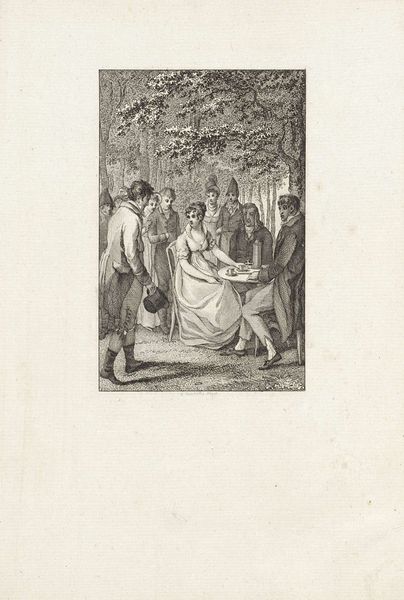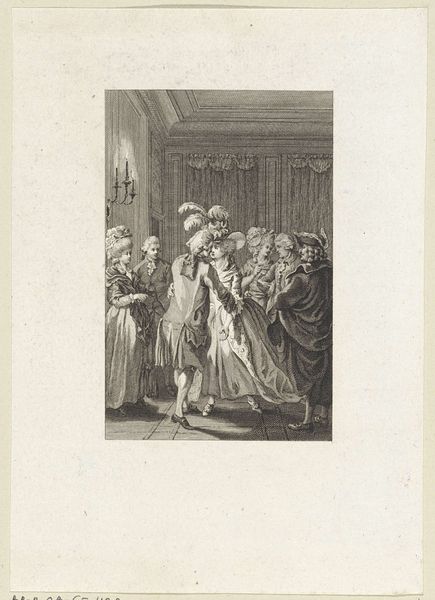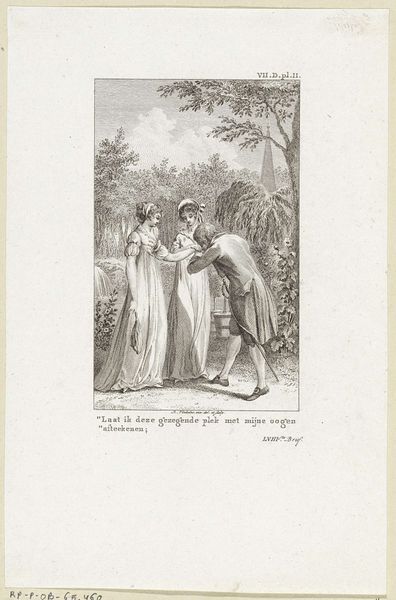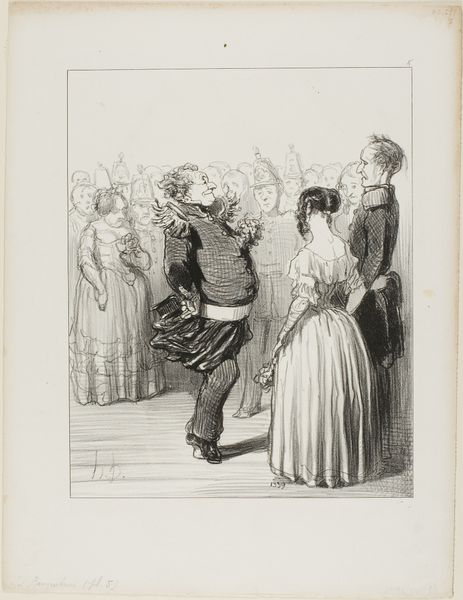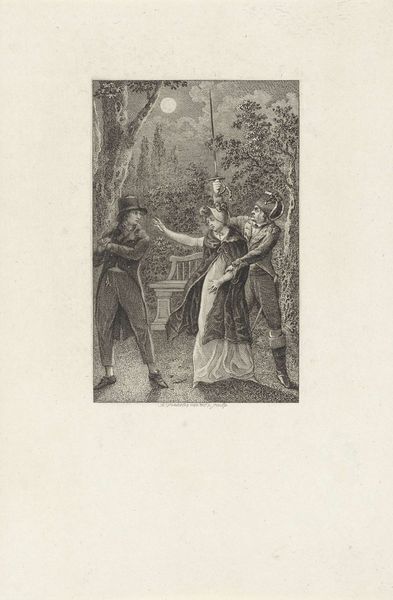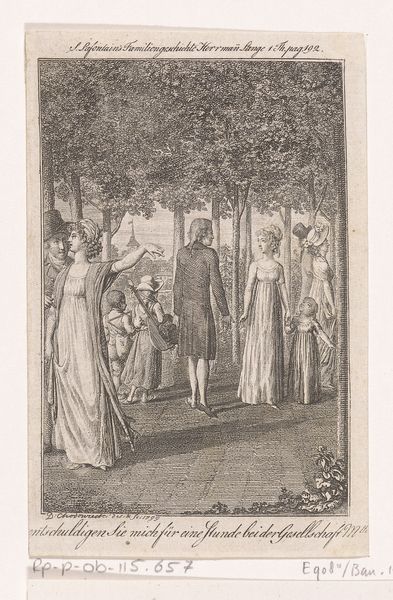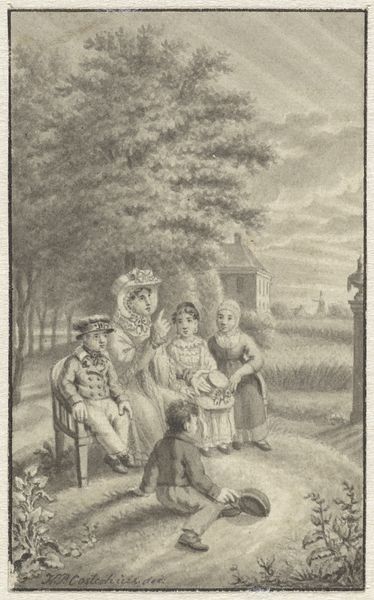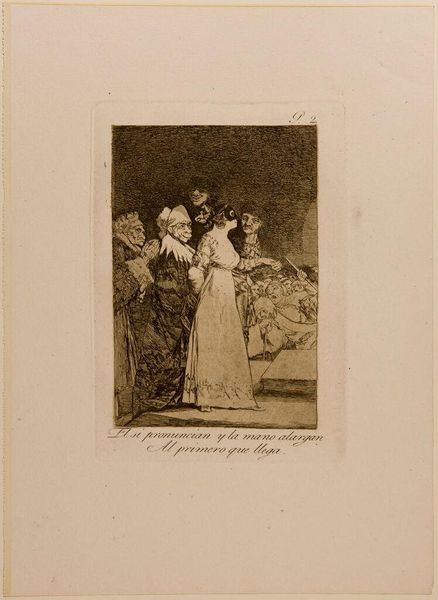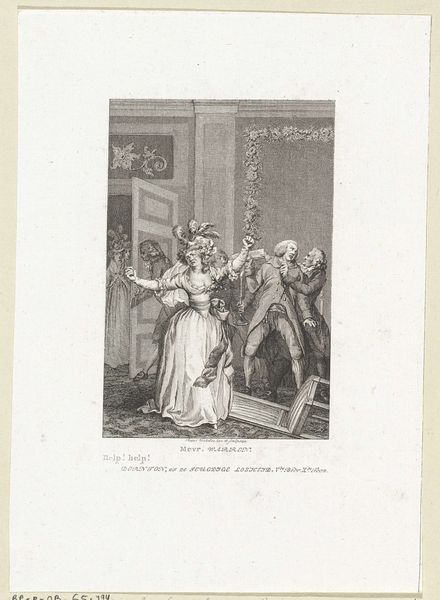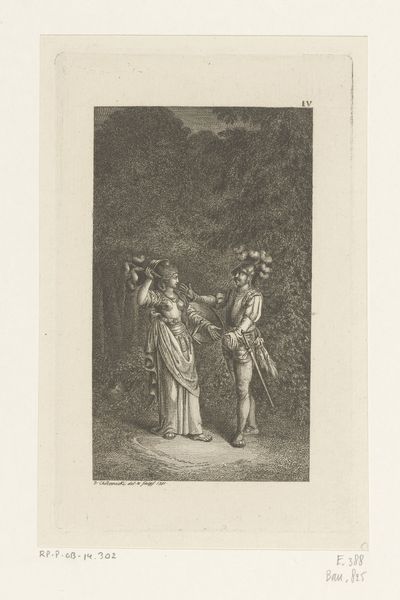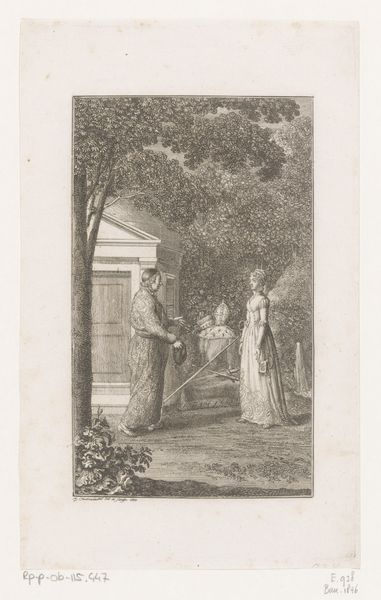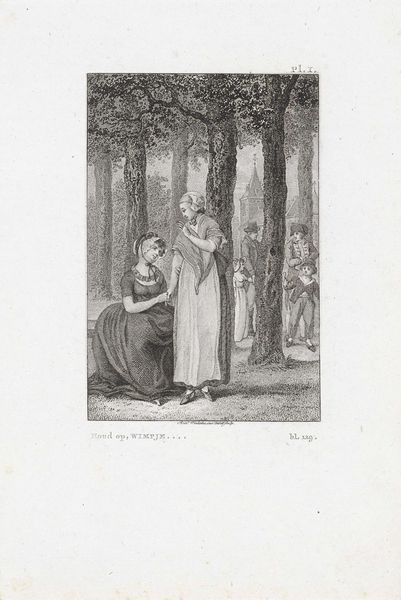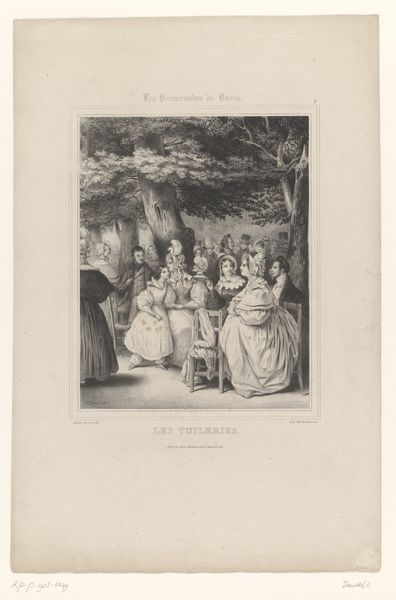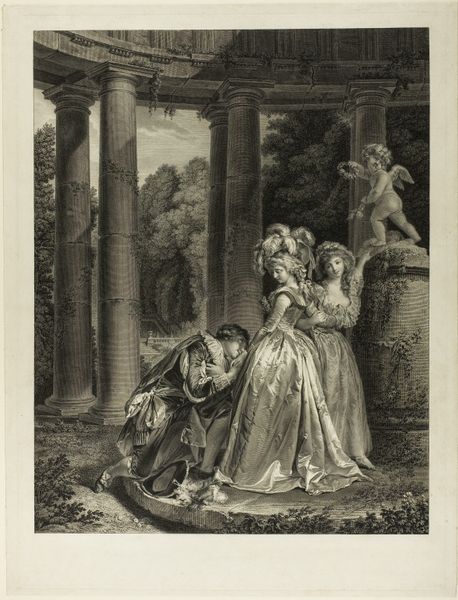
print, engraving
#
narrative-art
# print
#
old engraving style
#
figuration
#
romanticism
#
genre-painting
#
history-painting
#
engraving
Dimensions: height 201 mm, width 130 mm
Copyright: Rijks Museum: Open Domain
Editor: So, here we have "Couple and Rushing Woman," an engraving by Jacob Ernst Marcus, made in 1803. The detail achieved through the engraving process is fascinating, especially considering the social context of printmaking at the time. What aspects of this work strike you? Curator: Immediately, I'm drawn to the labor involved in producing such a detailed engraving. The lines, the textures... each element required immense skill and time. Consider, too, the socio-economic forces at play. Who was commissioning these prints? Were they meant for mass consumption, and how does this affect the artistic value ascribed to it now? What narratives about labour and production can we reconstruct? Editor: That's an interesting way to think about it. I was focusing on the dramatic narrative implied by the figures and their gestures. Curator: The narrative is undoubtedly present, a product of its time and potentially tied to specific social codes or popular literature. However, even the narrative itself is filtered through the materiality of the print. The availability of engravings made these stories accessible to a broader audience than painted works. This wider circulation arguably shaped how people consumed visual narratives, creating a shared visual language across social classes. To what extent did the reproducibility afforded by this medium impact visual culture? Editor: So you're saying that the *how* – the means of production – shapes the *what* – the narrative and its impact? Curator: Precisely. This engraving exemplifies how the medium itself contributes to the artwork's meaning and significance. Romanticism, as noted in the tags, wasn't just about themes; it involved a renegotiation of art production, and engraving became crucial. Think about the relationship between art and craft: what this suggests to you? Editor: I never really thought about engravings in this context, focusing more on painting and sculpture, but seeing it through a materialist lens offers such a broader understanding. Thanks! Curator: Absolutely! Examining the labor, the material conditions, the processes is fundamental.
Comments
No comments
Be the first to comment and join the conversation on the ultimate creative platform.
